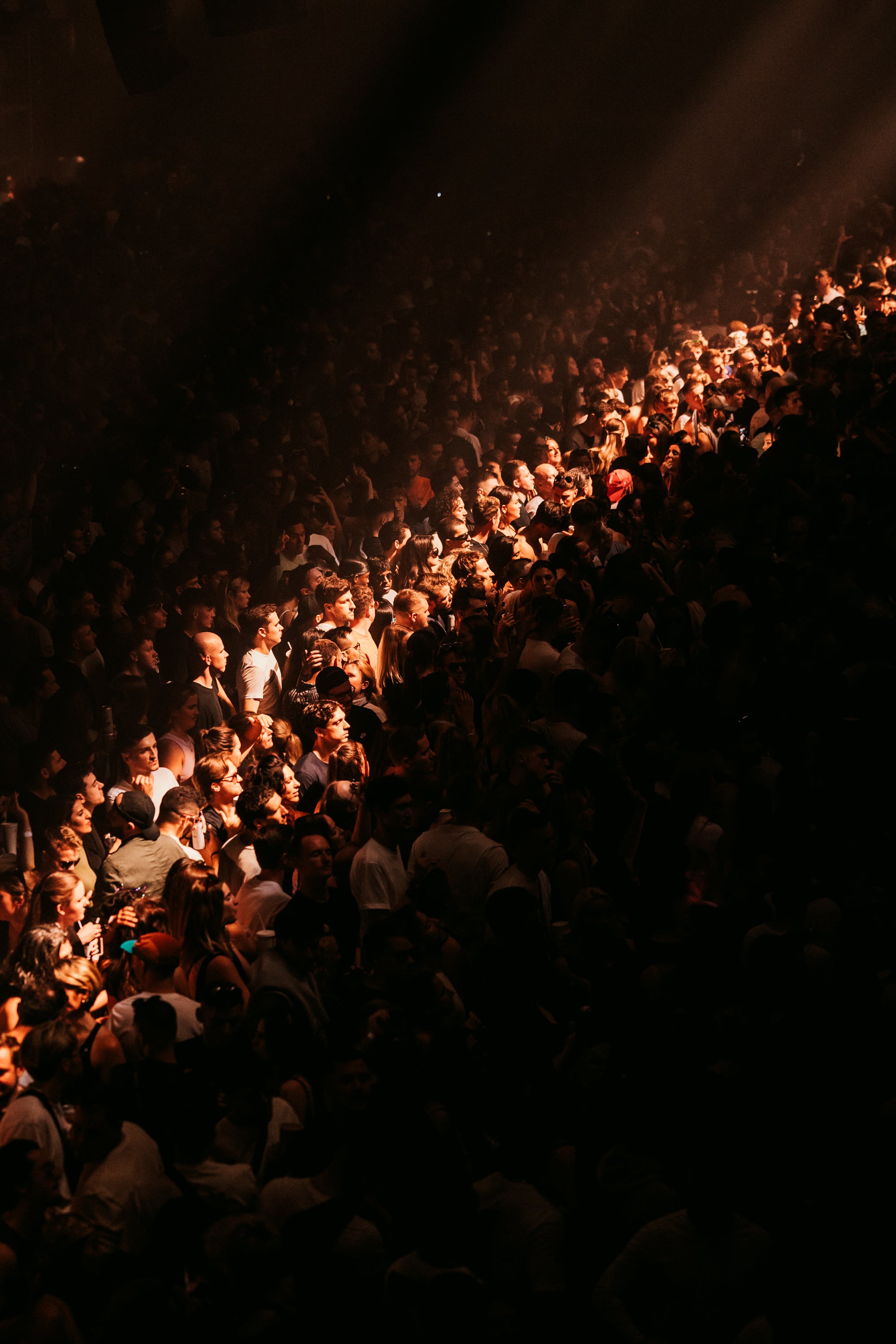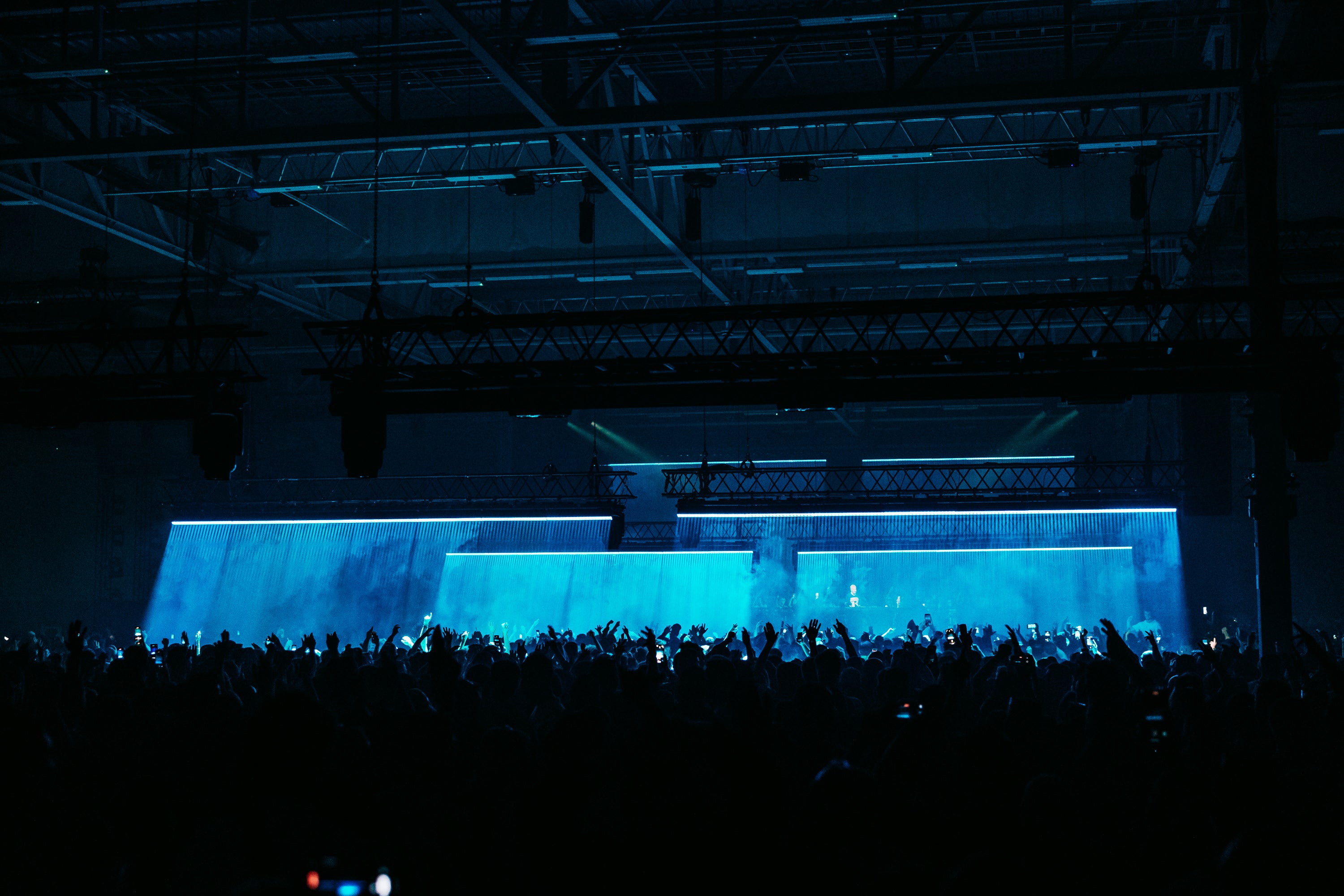Here for a rave, not a Rönnskär: How Drumsheds built a superclub inside an old Ikea
The 15,000-capacity space in Tottenham is set to become the country’s biggest dance venue – just dont call it a superclub. Isobel Lewis speaks with the Drumsheds director about his ‘new centre of cultural gravity’ and sets out to see what all the fuss is about


Your support helps us to tell the story
From reproductive rights to climate change to Big Tech, The Independent is on the ground when the story is developing. Whether it's investigating the financials of Elon Musk's pro-Trump PAC or producing our latest documentary, 'The A Word', which shines a light on the American women fighting for reproductive rights, we know how important it is to parse out the facts from the messaging.
At such a critical moment in US history, we need reporters on the ground. Your donation allows us to keep sending journalists to speak to both sides of the story.
The Independent is trusted by Americans across the entire political spectrum. And unlike many other quality news outlets, we choose not to lock Americans out of our reporting and analysis with paywalls. We believe quality journalism should be available to everyone, paid for by those who can afford it.
Your support makes all the difference.It’s a concerningly warm Saturday afternoon in October, and a crowd of twentysomethings is traipsing towards the old Ikea in Tottenham. A year ago, their pilgrimage would have been in search of flat-pack wardrobes and cheap bedding. Now, it’s for something a little… cooler. That big blue box has been gutted and transformed into Drumsheds, an expansive industrial event space with a stacked opening line-up of electronic music. Punters are powered by more than meatballs; we are here for a rave, not a Rönnskär shelving unit. There’s intrigue, too, in seeing how the commercial space has been transformed. Felix Martin of the band Hot Chip may be due to headline a sold-out Drumsheds show later this month, but he still has a soft spot for what the space used to be. “I don’t know about it as a club… but that Ikea was my local Ikea,” he tells me. “I have a lot of affection for it.”
The opening of Drumsheds comes with swirling feelings of anticipation – and some trepidation. After all, this is a 15,000-capacity venue opening in London at a time when we’ve repeatedly been told nightlife is dying. Like much of the arts, the night-time economy was decimated by Covid and is still experiencing the effects of a society in which people go out less and spend less money. In August, a study found that 31 per cent of UK clubs had been forced to permanently shut between June 2020 and June 2023, including 100 independent clubs in the last year alone. The cost of living crisis, gentrification, and a procession of Tory culture secretaries who wouldn’t know culture if it blasted them with a 140-decibel sound system, haven’t helped.
And yet, here comes Drumsheds. The venue is the latest venture from Broadwick Live, the production company responsible for the UK’s most impressive club spaces, including Printworks, which up until its closure in April saw revellers gather in a disused London printing press, and The Beams, an old sugar factory in the city. Up north, they opened Depot Mayfield beneath the Manchester Piccadilly station. By now, Simeon Aldred, the director of strategy, can open a club with his eyes closed. “After 27 venues, I think, we’ve got the method down of how to open a venue in 10 weeks,” he tells me a few days before opening, dressed in a high-vis vest and safety hat.
That weekend, Drumsheds opens with an impressive autumn line-up featuring Bicep, Gorgon City and Andy C (also the Sugababes, fresh off their hot ticket Boiler Room set in August). It’s a set of artists any electronic venue would be lucky to get, and the performers are equally as excited to see what’s in store. Hannah Lynch of the DJ collective Girls Don’t Sync, who are on the line-up at Elrow’s Halloween spectacular later this month, tells me playing Drumsheds will be a “huge moment” for the group. “The feeling of freedom and sense of community within a large capacity rave is unmatched.”
It’s a surprise, then, that when I use the phrase “superclub”, Aldred winces. He’s keen to stress that he has never seen his venues as clubs. “New centres of cultural gravity” is the preferred term. “I know that sounds a bit high and mighty,” he admits, but he’s got big plans for this venue, all of which go beyond the ambitions of your average dancehall. Streaming companies, ballets, immersive theatre and orchestras are already booked in to use Drumsheds. “I want my spaces to be ambidextrous, hybrid, and flexible,” he says.
Days after speaking with Aldred, I am on the train to Meridian Water in north London. Although Broadwick Live can’t reference Ikea themselves in Drumsheds’ marketing, as I approach the station and that big blue box comes into view, there’s no mistaking what this colossal space once was.
When friends ask for a review of the venue, “massive” is the first word that comes to mind. Size isn’t everything, but it kind of is when it comes to Drumsheds. X Room, the largest of three dance floors, lit up with pulsing lights and jumbo screens, holds a whopping 15,000 people. It is worth noting, however, that the entire event space is capped at 15,000 capacity to ensure both safety and room to groove. After all, the second largest room (Y) holds another 5,000 people, making it roughly the same size as the entire Printworks. Empty, the space seems like an impossible challenge – but once guests arrive, the joyous potential becomes clear.

Naturally, a space this size faces teething problems. As was the case in the Scandi chain it previously hosted, it is easy to get lost in the one-way system in search of toilets. Temperatures fluctuate and this balmy first Saturday has crowds sweating, but I suspect the concrete and metal will get nippy in the winter. Recalling a recent gig at Manchester’s Warehouse Project, Martin explains, “Because they’ve been repurposed from something else, venues like this have a bit of their own history and their own kind of story that you can definitely feel. They have a different energy as venues,” he says. “It’s one of those gigs where you’re wearing a jacket on stage!”
Similarly, these spaces – what are essentially big, echoey concrete boxes – can yield sound issues. “It’s more of a challenge for the engineers and the people working at the venues to make it sound good,” says Martin. “But they have all kinds of tricks and ways to make that work.” After a somewhat patchy first night (some revellers complained of poor sound quality in the largest room), the following week is declared a triumph. “Most middle-aged observation ever, BUT what a well-organised and managed venue. One of the best spaces I’ve ever been to, Drumsheds now has my heart,” says one person.
Politicians have quite literally prevented gateways into the industries that make up the bulk of UK nightlife
Drumsheds attracts a broad crowd – perhaps surprisingly so. On that inaugural day, 18-year-old roadmen in their Carhartt T-shirts bounced side-by-side with sequin-clad couples in their forties and seasoned ravers in their sixties. What unites everyone is their shared awe at the size of the venue, and a keenness to explore it.
No matter their age, however, there is a strict 10.30pm curfew. Drumsheds is primarily a day event space; only Bicep’s sold-out event in December goes beyond midnight. Their “edgy” warehouse feeling may speak to the Acid House rave movement, but these are expensive, commercialised events, with branded bars and a plethora of food stalls in the outer courtyard and an end-time compliant with local licensing – hence the early bedtime. As Warehouse Project creator Sacha Lord told local Manchester publication The Mill, these kinds of spaces are about “making it feel almost illegal, like a nod to the past”.

One myth Aldred is keen to dispel is that warehouse venues like Drumsheds or Printworks, away from the city centre, are in competition with the more old-school “club-clubs”, such as The Cause in Canning Town. “When I set up Printworks, people were like, ‘Is it gonna harm this place? Is it gonna harm that place?’ Honestly, we are not going to harm any of them,” he says. “Our audience leaves our venues at 10.30. And then they flood into the rest of the market.” Aldred is right. After any Drumsheds event, Instagram is flooded with partygoers crowdsourcing suggestions for unofficial afterparties.
When people discuss the challenges facing UK nightlife, it is a bureaucratic conversation: planning permission, noise complaints and licensing issues. Aldred praises the local councils and Transport for London for their help in opening Drumsheds, but is the first to say that drumming up support is not so easy elsewhere. “Councils outside of London and Manchester, their view of clubs is inconsistent right across the country,” he says. “There is no national strategy around the night-time economy. There is localised tribalism.”
It speaks to a wider problem in the arts, Martin says, where “we’re not really governed by politicians who see the value in the arts at all. There’s just nothing there, [but] hopefully that’s gonna change at some point”. Matty Chiabi of Girls Don’t Sync agrees, and says that the issue runs all the way back to the cutting of programmes and youth clubs where aspiring artists and production workers were once able to experiment freely. “Politicians have quite literally prevented gateways into the industries that make up the bulk of UK nightlife,” she says. “The government must recognise that spaces like these are crucial to our communities and to sustain UK nightlife.” Her bandmate Gaia (AKA G33) adds that the authorities can’t be counted on; it’s up to communities passionate about nightlife to make sure that what does survive is more sustainable and inclusive, with more diverse line-ups and a commitment to stamping out sexual violence in these spaces.”

The reluctance to call Drumsheds a club, then, is twofold. Broadwick Live would struggle to get licensing if it was seen as a club-only space, and it would also be “scary” to try and run such a large venue as purely a club in this economy. It would be “foolhardy” not to consider this, Aldred says. “It’s that holistic mix that I think makes it economically work for us. Would I just try and run this twice a week as a club? Definitely not.”
So no, for all intents and purposes, Drumsheds is not a club. But there’s still hope, from musicians, DJs, and those who just love a Big Night Out, that this space can prove the night-time economy is worth investing in – even if the venue itself shuts before Graham Norton is on telly. “I hope the scene can keep existing and keep thriving, because it’s so important, especially for younger people, to have that outlet,” Martin says. Sophia Violet from Girls Don’t Sync echoes his sentiment, adding, “Whether a venue is 100-cap or 15,000-cap, people want to come together and celebrate the music that we love.”
Ultimately, Violet says, music has the power to create “a shared energy” like nothing else. “I have faith that not only the recent growth of dance music fans but the desire for that shared energy will keep it afloat,” she says. That first day in Drumsheds, I can’t help but notice the looks of wonder from everyone I pass. People want to believe that nightlife is being taken seriously again; they want to believe this venture can succeed. God, I hope they’re right.



Join our commenting forum
Join thought-provoking conversations, follow other Independent readers and see their replies
Comments